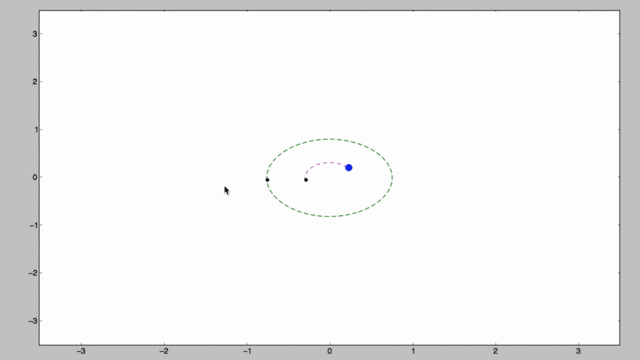This is a small piece of python code to help the study of dynamical systems in two dimensions. LSD will let you test several initial conditions by clicking on where you want the dynamical system to start. The idea is to be able to study different kinds of attractors and, by changing the system's parameters, visualize simple bifurcations. Here is what it looks like:
It was inspired by lectures from Prof. Reynaldo Pinto & Prof. Leonardo Maia at IFSC (USP). The course material can be found here. It uses a linear multistep methods to solve the differential equations. To visualize the evolution of the dynamical system, I'm simply using matplotlib with animations. A possible extension to 3D systems is almost straightforward and I plan to implement it in the near future.
To use it, simply run
# python LSD.py
It will open a blank plot. Click and watch the animation.
To change the default dynamical system being simulated, use the flag -d:
# python LSD.py -d YS
You can also change the plotting range:
# python LSD.py -d YS -xmin -7 -xmax 5 -ymin -3 -ymax 7 -np 5
If you're feeling lost type
# python LSD.py -h
LSD is no fancy piece of software: it's simply a small python script to handle easy visualization of 2-D dynamical systems. All you need to do is to download LSD.py and run it.
Currently, it only depends on numpy, matplotlib and scipy. If you're on Ubuntu,
# sudo apt-get install -y python-numpy python-matplotlib python-scipy
On Fedora,
# su -c 'dnf install -y python-numpy python-matplotlib python-scipy
If you're using something else, it should be pretty easy to figure out what to do, or else just hit me with a question.
Do whatever you want, don't sue me.

